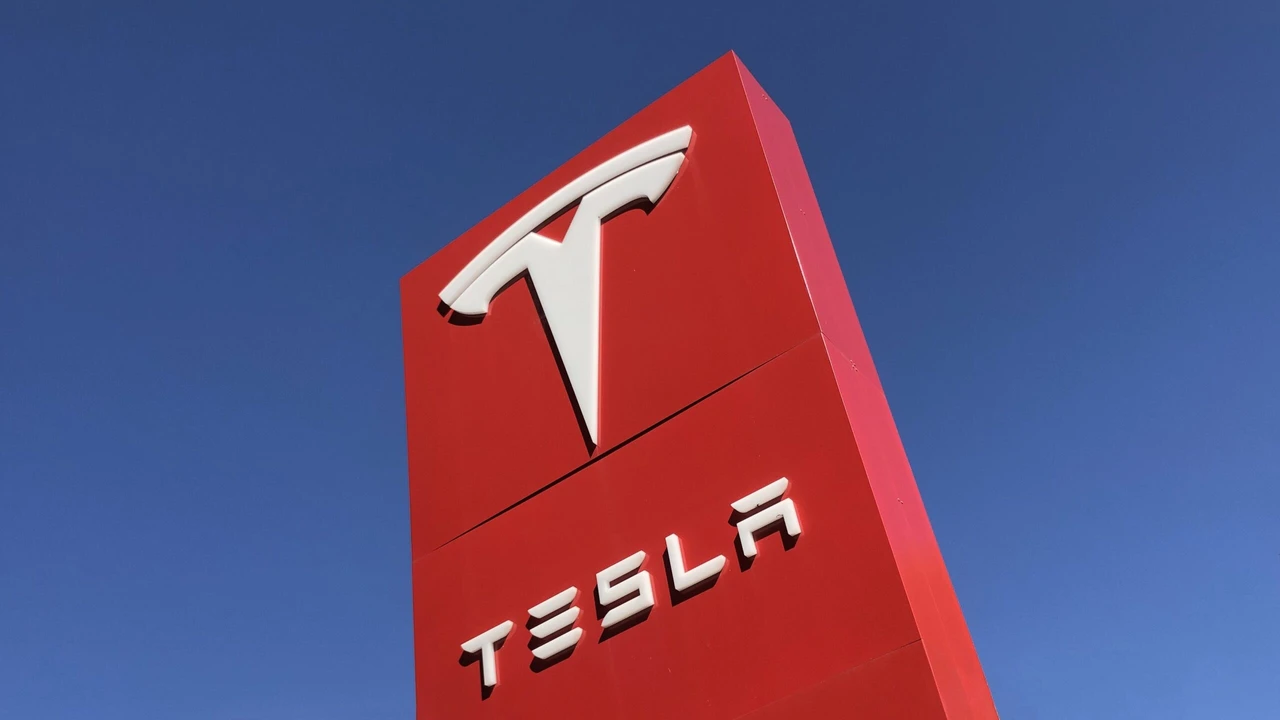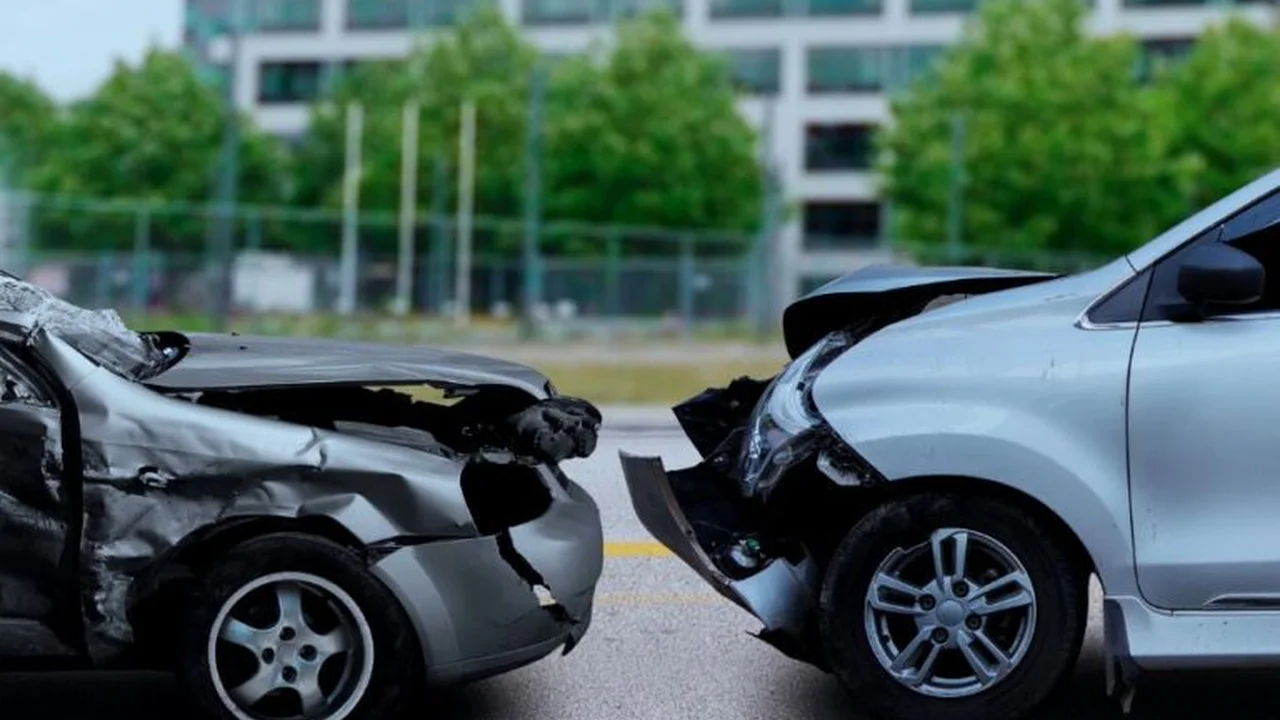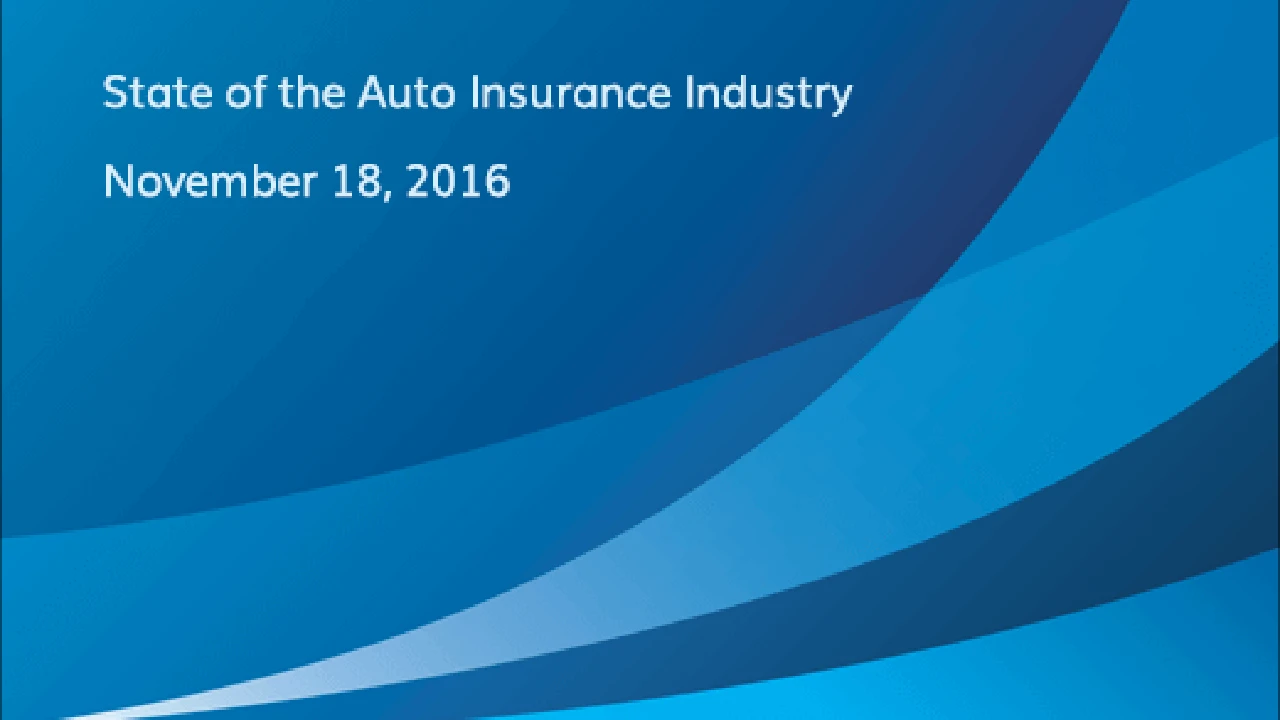Autonomous Vehicles and Car Insurance: A New Era

The Self-Driving Revolution and Your Car Insurance Policy Autonomous Vehicle Insurance Explained
Hey folks! Buckle up, because the future is here, and it’s driving itself... literally! We're talking about autonomous vehicles (AVs), also known as self-driving cars. These aren't just something out of a sci-fi movie anymore; they're hitting the roads, and they're changing the whole game when it comes to car insurance. So, what happens when your car can drive itself, and who's responsible when things go wrong? Let's dive in!
For decades, car insurance has been based on the idea that the driver is in control. If you mess up, you’re responsible. But what happens when the car is doing the driving? That’s the million-dollar question insurance companies are scrambling to answer. We're talking about a massive shift in liability, and it's a bit of a legal and logistical minefield. Think about it: who's liable if a self-driving car causes an accident? Is it the car's owner? The manufacturer? The software developer? The possibilities are endless, and the legal precedents are still being set.
One thing is for sure: traditional car insurance policies simply aren’t equipped to handle the complexities of autonomous vehicle accidents. They're designed for human error, not software glitches or sensor malfunctions. This is where specialized autonomous vehicle insurance comes in. It's a new breed of coverage that takes into account the unique risks associated with self-driving technology. But what exactly does it cover, and how does it differ from your existing policy?
Understanding the Levels of Automation The Impact on Insurance Premiums
Before we get into the nitty-gritty of insurance, let’s talk about the different levels of automation. The Society of Automotive Engineers (SAE) defines six levels, from 0 (no automation) to 5 (full automation). Most vehicles on the road today have some level of driver assistance, like adaptive cruise control or lane keeping assist, which falls into levels 1 and 2. But true self-driving cars, capable of handling all driving tasks in most conditions, are at level 4 or 5. These are the vehicles that are really shaking up the insurance industry.
The level of automation in your vehicle directly impacts your insurance premiums. Level 1 and 2 systems might actually lower your premiums, as they can help prevent accidents. But as you move towards higher levels of automation, things get more complicated. Insurance companies are still trying to figure out how to price the risk associated with these vehicles. Some argue that self-driving cars should be inherently safer, leading to lower premiums overall. Others worry about the potential for software glitches and hacking, which could lead to catastrophic accidents. So, expect some volatility in premiums as the technology evolves and insurance companies gather more data.
Another factor affecting premiums is data. Lots of data. Autonomous vehicles generate tons of data – from sensor readings to driving logs. Insurance companies want to use this data to assess risk and determine premiums. But there are privacy concerns to consider. Who owns the data? Who has access to it? And how can it be used without violating your privacy? These are important questions that regulators and automakers are grappling with.
Liability in the Age of Self-Driving Cars Who Pays When Things Go Wrong?
Okay, let's get to the heart of the matter: who's responsible when a self-driving car crashes? This is where things get really interesting. In a traditional accident, it's usually pretty clear who's at fault – the driver who ran the red light, the driver who was texting, etc. But with autonomous vehicles, the lines are blurred. Is it the owner's fault for not maintaining the vehicle properly? Is it the manufacturer's fault for a faulty sensor? Or is it the software developer's fault for a coding error?
Many experts believe that liability will shift from the driver to the manufacturer or software provider. This is known as product liability. If a self-driving car malfunctions due to a defect in its design or software, the manufacturer or software provider could be held liable for any resulting damages. This would be a major shift from the current system, where the driver is almost always responsible.
However, there are also scenarios where the owner could still be held liable. For example, if the owner fails to update the vehicle's software or tampers with the sensors, they could be responsible for any accidents that result. Similarly, if the owner overrides the autonomous system and takes control of the vehicle, they would be responsible for their own actions.
The legal framework for autonomous vehicle liability is still evolving. Many states are passing laws to address this issue, but there's no national standard yet. This means that the rules can vary depending on where you live. It's important to stay informed about the laws in your state and how they might affect your insurance coverage.
Specific Car Insurance Products for Autonomous Vehicles Coverage Options and Recommendations
So, what kind of insurance do you need for your self-driving car? Well, it depends on the level of automation and the specific risks you want to cover. Here are a few options to consider:
- Traditional Car Insurance: This covers the basics, like bodily injury and property damage liability. However, it might not be sufficient for autonomous vehicles, as it doesn't address the unique risks associated with self-driving technology.
- Product Liability Insurance: This covers damages caused by defects in the vehicle's design or software. It's usually purchased by the manufacturer or software provider, but you might want to check if your policy includes some form of product liability coverage.
- Cybersecurity Insurance: This covers damages caused by hacking or other cyberattacks. As autonomous vehicles become more connected, they become more vulnerable to cyber threats. Cybersecurity insurance can help protect you from financial losses in the event of a cyberattack.
- Data Breach Insurance: This covers damages caused by a data breach involving your vehicle's data. As mentioned earlier, autonomous vehicles generate tons of data, and this data can be valuable to hackers. Data breach insurance can help protect you from liability if your data is compromised.
Product Recommendations and Comparisons:
Let's look at some hypothetical examples (remember to always check with your insurance provider for specific policy details and pricing):
Example 1: "SafeRide AutoProtect" (Hypothetical)
Features: A comprehensive policy specifically designed for Level 4 autonomous vehicles. Includes traditional liability coverage, product liability extension, cybersecurity protection (up to $1 million), and data breach coverage. Offers usage-based pricing based on the frequency of autonomous mode usage.
Pros: Wide range of coverage, potential for lower premiums if you primarily use autonomous mode, dedicated support for autonomous vehicle claims.
Cons: Potentially higher premiums than traditional policies, requires installation of a data logger in the vehicle.
Pricing: Roughly $1800 - $2500 annually, depending on driving history and vehicle type.
Scenario: Ideal for owners of Level 4 vehicles who want peace of mind knowing they are fully protected against all potential risks. Especially suitable for individuals who frequently use autonomous mode for commuting.
Example 2: "TechSure Enhanced Coverage" (Hypothetical)
Features: An add-on to a standard car insurance policy that provides additional coverage for Level 3 autonomous features. Includes coverage for sensor malfunctions, software glitches, and limited product liability protection (up to $500,000).
Pros: More affordable than a dedicated autonomous vehicle policy, provides some protection against technology-related risks, can be easily added to an existing policy.
Cons: Limited coverage compared to a dedicated policy, may not cover all potential risks associated with autonomous driving, requires proof of regular software updates.
Pricing: Approximately $500 - $800 annually, depending on the base policy and vehicle features.
Scenario: A good option for owners of vehicles with advanced driver-assistance systems (Level 3) who want some extra protection without breaking the bank. Suited for individuals who primarily drive manually but occasionally use autonomous features on highways.
Example 3: "DriveWise Basic Tech" (Hypothetical)
Features: A basic policy for Level 2 autonomous vehicles, focusing primarily on liability coverage with a small add-on for sensor-related repairs (up to $10,000). Offers discounts for vehicles with advanced safety features.
Pros: Most affordable option, provides essential liability coverage, rewards drivers with safe vehicles.
Cons: Minimal coverage for technology-related risks, does not include product liability or cybersecurity protection, may not be sufficient for serious accidents involving autonomous features.
Pricing: Around $1200 - $1500 annually, with potential discounts for safety features.
Scenario: Suitable for owners of vehicles with basic driver-assistance systems (Level 2) who are primarily concerned with liability coverage and want to save money on their premiums. Ideal for individuals who rarely use autonomous features and prioritize affordability.
Important Considerations:
* Read the Fine Print: Carefully review the policy terms and conditions to understand exactly what is covered and what is excluded. Pay attention to any limitations or exclusions related to autonomous driving. * Shop Around: Get quotes from multiple insurance companies to compare coverage and pricing. Don't be afraid to negotiate. * Ask Questions: Don't hesitate to ask your insurance agent questions about autonomous vehicle insurance. Make sure you understand the policy and how it applies to your specific vehicle and driving habits. * Stay Informed: The autonomous vehicle insurance market is constantly evolving. Stay up-to-date on the latest developments and be prepared to adjust your coverage as needed.The Future of Car Insurance How Autonomous Driving Will Reshape the Industry Telematics and Data Privacy Concerns
Looking ahead, the rise of autonomous vehicles will fundamentally reshape the car insurance industry. We're likely to see a shift towards usage-based insurance, where premiums are based on how often you use the autonomous system. We might also see more collaboration between automakers and insurance companies, with bundled insurance packages offered at the point of sale. The entire claims process will likely become more automated, with data from the vehicle being used to determine fault and assess damages.
Telematics will play a huge role in the future of car insurance. Telematics devices collect data about your driving behavior, such as speed, acceleration, and braking. This data can be used to assess your risk and determine your premiums. As autonomous vehicles become more prevalent, telematics data will become even more valuable. Insurance companies will be able to use this data to monitor the performance of the autonomous system and identify potential safety issues.
However, there are also significant data privacy concerns to consider. Who owns the telematics data? Who has access to it? And how can it be used without violating your privacy? These are important questions that need to be addressed as telematics becomes more widespread. Some states are passing laws to protect consumer privacy in the context of telematics, but there's no national standard yet.
Ultimately, the future of car insurance in the age of autonomous vehicles is uncertain. But one thing is clear: the industry is facing a period of rapid change and innovation. As autonomous technology continues to evolve, insurance companies will need to adapt to the new risks and opportunities that it presents. And drivers will need to stay informed about their insurance options and how they can protect themselves in the event of an accident.
Autonomous Vehicle Safety Features That Can Lower Insurance Costs Advanced Driver-Assistance Systems (ADAS) and Premium Discounts
Many autonomous vehicles and even those with advanced driver-assistance systems (ADAS) come equipped with safety features that can actually help you save money on your car insurance. Insurance companies often offer discounts for vehicles with features like:
- Automatic Emergency Braking (AEB): This system can automatically apply the brakes to prevent or mitigate a collision.
- Lane Departure Warning (LDW): This system alerts you if you start to drift out of your lane.
- Blind Spot Monitoring (BSM): This system alerts you if there's a vehicle in your blind spot.
- Adaptive Cruise Control (ACC): This system automatically adjusts your speed to maintain a safe following distance.
- Parking Assist: This system helps you park your vehicle safely and efficiently.
These features can help reduce the risk of accidents, which can lead to lower insurance premiums. Be sure to ask your insurance agent about discounts for vehicles with these safety features. You might be surprised at how much you can save.
The Ethical Considerations of Autonomous Vehicle Accidents Algorithmic Bias and the "Trolley Problem" in Insurance
Autonomous vehicles raise some interesting ethical questions, particularly when it comes to accidents. For example, what happens if an autonomous vehicle is faced with a situation where it has to choose between two bad outcomes? This is often referred to as the "trolley problem." Should the vehicle prioritize the safety of its occupants or the safety of pedestrians? Should it prioritize the safety of adults or children? These are difficult questions with no easy answers.
Another ethical concern is algorithmic bias. Autonomous vehicles rely on algorithms to make decisions. If these algorithms are biased, they could lead to unfair or discriminatory outcomes. For example, if an algorithm is trained on data that is biased against a particular group of people, it might be more likely to make mistakes that harm members of that group. Insurance companies need to be aware of these ethical considerations and take steps to ensure that their algorithms are fair and unbiased.
Navigating the Complexities of Autonomous Vehicle Insurance A Checklist for Consumers
Okay, so you're thinking about buying a self-driving car, or maybe you already own one. How do you navigate the complexities of autonomous vehicle insurance? Here's a checklist to help you get started:
- Research your options: Don't just settle for the first insurance policy you find. Shop around and compare quotes from multiple insurance companies.
- Understand your coverage: Make sure you understand what your policy covers and what it doesn't. Pay attention to any limitations or exclusions related to autonomous driving.
- Ask questions: Don't hesitate to ask your insurance agent questions about autonomous vehicle insurance. Make sure you understand the policy and how it applies to your specific vehicle and driving habits.
- Stay informed: The autonomous vehicle insurance market is constantly evolving. Stay up-to-date on the latest developments and be prepared to adjust your coverage as needed.
- Consider your risks: Think about the specific risks you want to cover. Do you want product liability insurance? Cybersecurity insurance? Data breach insurance? Choose a policy that meets your needs.
- Review your policy regularly: Your insurance needs might change over time. Review your policy at least once a year to make sure it still meets your needs.
The Future of Transportation Mobility as a Service (MaaS) and its Impact on Car Insurance
The rise of autonomous vehicles is also closely tied to the concept of Mobility as a Service (MaaS). MaaS is a transportation model where you access transportation services on demand, rather than owning a vehicle. Think of it like a subscription service for transportation. With MaaS, you might use a combination of autonomous vehicles, ride-sharing services, public transportation, and other modes of transportation to get around.
MaaS has the potential to significantly impact the car insurance industry. If more people start using MaaS, fewer people will own cars. This could lead to a decline in the demand for traditional car insurance. However, MaaS also creates new insurance opportunities. For example, MaaS providers will need insurance to cover their fleet of autonomous vehicles. And individuals might need insurance to cover their use of MaaS services.
Conclusion – Just kidding! (We Promised No Conclusion)
So, there you have it! A deep dive into the world of autonomous vehicles and car insurance. It's a complex and rapidly evolving landscape, but hopefully, this guide has helped you understand the key issues and make informed decisions about your insurance coverage. Remember to stay informed, shop around, and ask questions. And buckle up, because the future of driving is here!
:max_bytes(150000):strip_icc()/277019-baked-pork-chops-with-cream-of-mushroom-soup-DDMFS-beauty-4x3-BG-7505-5762b731cf30447d9cbbbbbf387beafa.jpg)






